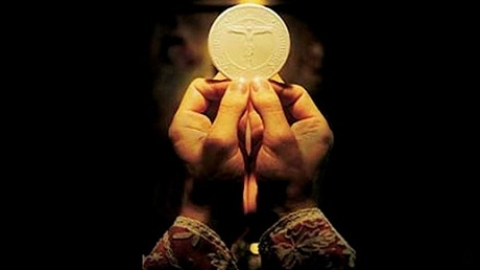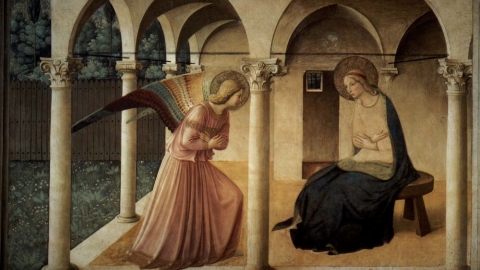The Vatican Questions the Bishops on the Place of the "Extraordinary" Rite

Cardinal Luis Ferrer
On March 7, 2020, Cardinal Luis Ladaria Ferrer, Prefect of the Congregation for the Doctrine of the Faith, sent a questionnaire to all episcopal conferences which each bishop must complete and return before July 31, 2020. The document relates to application of the motu proprio of Benedict XVI of July 7, 2007 organizing the celebration of the traditional mass under the name of "extraordinary rite."
The nine questions posed to Catholic bishops around the world are:
1) What is the situation in your diocese with respect to the extraordinary form of the Roman rite?
2) If the extraordinary form is practiced there, does it respond to a true pastoral need or is it promoted by a single priest?
3) In your opinion, are there positive or negative aspects to the use of the extraordinary form?
4) Are the norms and conditions established by Summorum Pontificum respected?
5) Did it occur to you that, in your diocese, the ordinary form has adopted elements of the extraordinary form?
6) For the celebration of the Mass, do you use the Missal promulgated by Pope John XXIII in 1962?
7) Besides the celebration of the Mass in the extraordinary form, are there other celebrations (for example, Baptism, Confirmation, Marriage, Penance, Unction of the sick, Ordination, Divine Office, Easter Triduum, funeral rites) according to the liturgical books prior to Vatican Council II?
8) Has the motu proprio Summorum Pontificum had an influence on the life of seminaries (the seminary of the diocese) and other formation houses?
9) Thirteen years after the motu proprio Summorum Pontificum, what is your advice about the extraordinary form of the Roman rite?
Obviously the Vatican intends to draw up a balance sheet thirteen years after the promulgation of Benedict XVI’s motu proprio. The latter allowed any Catholic priest of the Roman Rite to celebrate the Mass prior to the Second Vatican Council and its catastrophic liturgical reform. Pope Ratzinger clarified that the typical edition of the 1962 Missal had never been abrogated, which amounted to acknowledging that the Tridentine Mass had been unjustly prohibited or prevented under Paul VI.
Concerns and Questions
The questionnaire sent by the Congregation for the Doctrine of the Faith seems to reduce the evaluation of an immemorial rite of the Church in light of its usefulness in satisfying a “true pastoral need.” Here we find a constant of the Deviated Liturgical Movement, where the pastoral aspect has become all that matters in the liturgy – (cf. our articles on 50 Years of the New Mass).
The Vatican wants to know which bishop celebrates according to the 1962 missal, whether the new Mass has adopted elements of the Mass of All Time, if it exerts a power of attraction on the seminarians and the houses of formation, if the liturgical books from 1962 - breviary and rituals of all the sacraments - are used. Is this so as to rejoice about it, to support a movement of return to the sense of the sacred, to rectify the errors and post-conciliar liturgical deviations? Or is it to worry about it, and continue to keep under wraps all attempts to correct a new rite incapable, given its poverty, of satisfying the aspiration of souls to render God a truly Catholic worship?
Benedict XVI was honest enough to recognize that the liturgical reform had left a devastated wasteland. He did not hesitate to speak of the demolition of the liturgy. However, he believed it was possible to reform a failed reform. Thirteen years later, this concern is no longer topical at the Vatican, and the supporters of the liturgical revolution intend to maintain it.
Like the fight for the faith, the fight for the Mass is not over. It suffices to recall the number of pitfalls that the implementation of Summorum pontificum experienced and the ill will encountered by all those who wanted to extend and disseminate the Holy Mass in its sacrosanct rite. The Franciscans of the Immaculate, for wanting to opt for the Tridentine Mass in their houses, were severely sanctioned and even persecuted. On the side of the bishops, how many have really shown the pastoral solicitude they were asked to have towards the priests and the faithful eager to discover or rediscover a true Catholic liturgy? And how many have taken the trouble to measure the importance of rendering to God the worship which is due Him in spirit and in truth? These would be other questions to ask, and another investigation to be carried out, that of the history of the obstacles and traps that the bishops or the episcopal conferences have set out to oppose any “turning back.” They will not let go of the gains of the revolution so easily.
Finally, there remains the question of what will happen to this investigation after July 31, 2020. Will the system put in place by Benedict XVI be questioned, renewed, or even extended and generalized—one can dream! Time will tell.
(Sources : vatican.va/thecatholictelegraph – FSSPX.Actualités - 01/05/2020)


